For years, I have started this list by saying something to the effect of these rankings are unlike traditional rankings. After the events over the past 12 weeks, truer words have never been typed. The current world of prospecting is completely different from what we have become accustomed to. Instead, we are left with summer camp and player pools.
Below, the top-50 list has been modified to reflect the current environment as best as one could. Teams, for the most part, have included their top prospects as part of their 60-man pool. There is a lot of talent out there to choose from. Will teams use them? That's the question that keeps us intrigued.
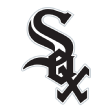 1. Luis Robert, OF, Chicago White Sox
1. Luis Robert, OF, Chicago White Sox
For the second straight year, the South Side of Chicago has a potential stud outfielder knocking on the door of the majors. It was Eloy Jimenez last year. Robert gets the nod this year, and he has the potential to be even better, as he possesses not only power but speed. Until 2019, the power was more projection than production, but that changed quickly, with 32 combined home runs across three levels and an additional 43 other extra-base hits. He also swiped 36 total bases and crossed home plate 108 times. It's plus-raw power that is now game power, with plus-speed and the ability to play center field with a strong arm. He has a superstar profile, and with the service time question answered by a long-term extension, he is someone who warrants draft consideration immediately.
SUMMER UPDATE: Robert narrowly remains at the top of the list. He is a multipurpose player on an offense that should be a lot of fun. If he were a middle infielder, he would be a unanimous choice for No. 1 in 2020, but you could make the case for No. 2 and 3 on my list as well. To me, in a shortened format, a player that can provide value in a bunch of categories will be key. Robert has a special blend of power and speed in a lineup that projects to score a lot. That means a combination of home runs and steals, which should lead to a bunch of runs scored. Without service time concerns, he should get as much playing time as a 60-game season can provide.
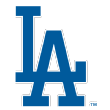 2. Gavin Lux, 2B, Los Angeles Dodgers
2. Gavin Lux, 2B, Los Angeles Dodgers
Lux has already reached the highest level and should spend most, if not all, of this season there as well. Max Muncy is still around, and even Chris Taylor and Enrique Hernandez stand ahead of him because of their defensive flexibility. None has the bat skills of Lux, but in terms of roster construction and service time deadlines, that might not matter to start the year. The 22-year-old is coming off a tremendous season in which he hit .347 in the minors, including .392 in more than 200 plate appearances at Triple-A. The stick is not hollow either. He belted 28 home runs, including two for the Dodgers late in the season. Lux is the best double-play partner for Corey Seager, and management resisted moving him in a trade, which portends a role for him at the keystone -- despite the veterans around him.
SUMMER UPDATE: The universal DH is a blessing for Lux and was almost enough to push him to the top, though Robert's bag of tools gives him the edge. Having the DH in play allows Lux to play second base and for others to rotate between the extra hitter's spot and other positions. Add in a shortened season and you can also throw out the service time worries. What that leaves is a polished hitter (despite his youth) with decent pop who plays the middle infield on a World Series favorite with two former MVPs waiting to drive him home. Sounds good to me.
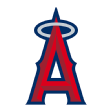 3. Jo Adell, OF, Los Angeles Angels
3. Jo Adell, OF, Los Angeles Angels
Adell has a profile similar to Robert's. He can hit. He can run. He can defend (although center field is already taken). You could even argue he does a few things better. The drawback for me is that there is still a lot of projection, and Robert is more developed in several of those areas. Adell has 30/30 potential but has topped 20 home runs just once and never stolen more than 15 bases in any season. A decent amount of that is because he has missed time with injury at various points in his career. He also struggled once he reached Salt Lake, striking out 43 times in 121 at-bats in his first taste of Triple-A ball. The talent is there. Robert will reach the majors first, which is significant for a list centered on the 2020 season.
SUMMER UPDATE: Adell is in the pool, but will he make waves? (See what I did there?) In a normal year, Adell would have likely spent two months in the minors in order to suppress his earning power. But with the urgency of a fast start and keeping in contention, Adell may not be in the shallow end for long. The Angels hired Joe Maddon to manage a winner. They spent big on Anthony Rendon and also have the best player of this generation in center field. I would expect Adell to debut sometime in August. At his peak, we're talking about a dynamic runner and hitter that has a chance to be better than anyone on this list -- and with a little more consistency and health.
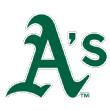 4. A.J. Puk, SP, Oakland Athletics
4. A.J. Puk, SP, Oakland Athletics
Top-notch left-handed starters are a treasured commodity, and the A's are lucky to have two young southpaws that could anchor their rotation through the next decade. Puk returned from the Tommy John surgery that wiped out his entire 2018 and lasted into 2019. He returned to the minors midseason and Oakland was cautious with his use, choosing to keep him in the bullpen rather than force him back to the rotation prematurely. He looked solid in 11 innings out of the Oakland pen, racking up 13 strikeouts. He predominantly used his fastball and slider as a reliever, with the heater living in the upper 90s. As a starter, he will use a slower breaking ball and an upper-80s change that still needs work. He's not as polished as Luzardo, but he has tremendous stuff, so he does not need to be. Innings will be a concern, as he did not build much of a workload last year.
SUMMER UPDATE: With the news of Jesus Luzardo testing positive for COVID-19, I'll switch the Oakland lefties, with Puk moving up to No. 4 and Luzardo dropping to No. 10. Luzardo is reportedly feeling good, but obviously the missed time will not help his chances of cracking the initial 30-man roster.
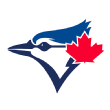 5. Nate Pearson, SP, Toronto Blue Jays
5. Nate Pearson, SP, Toronto Blue Jays
I have said this before, and I will say it again. If not for Luzardo, I'd have no issue making Pearson my top pitching prospect heading into 2020. The profile is prototypical. At 6-6 and 245 pounds, he has the frame for 200-plus innings. His fastball reaches the upper 90s. He has a wipeout pitch with a hard slider but also tosses a slower breaking ball to keep you off balance. There is even an advancing off-speed pitch that should help fend off the dreaded platoon split. Oh, did I mention he also has pretty good control for a dude of this size and with that stuff? The downside is experience. Despite being drafted in 2017, Pearson has just 123⅓ innings as a professional (plus 20 more if you count the Arizona Fall League). Of those, 101 came in 2019 alone. He did reach Triple-A by the end of the year, so a brief cameo in Buffalo to start the season could be all Toronto needs for him to then make the quick trip up the QEW to Rogers Centre.
SUMMER UPDATE: Pearson is already one of the most electric arms in professional ball and could actually benefit from this new world of baseball. He needs to pitch. He has already missed large chunks of development in the past due to injury. The Jays might not yet be ready to contend, which means that development could come ahead of wins in a 60-game sprint. This format may work in favor of a lot of young arms that will not start 10-12 games but could eat up 40-50 innings as a multi-inning reliever. These types could be an unconventional source for wins, strikeouts and even the occasional long save. Pearson has two pitches that will play well at the highest level and enough control to get by with the 40-50 innings he could throw. Perhaps it won't come on Opening Day to keep another year of control, but I would expect him on the roster for a good portion of the season.
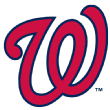 6. Carter Kieboom, SS, Washington Nationals
6. Carter Kieboom, SS, Washington Nationals
The Nationals' first-round pick in 2016, Kieboom had his best season as a professional last season, at least tying career marks in the triple-slash categories while popping his most combined home runs. He received a brief call-up in late April and struggled as much as one could in 10 games. Despite a few openings along the way, he never made it back to Washington, though he will collect a World Series ring for his cameo appearance. With several veterans gone or on the way out, he comes into 2020 with a shot in earnest to earn a starting role. He can provide a solid bat with average-or-better power and what should be above-average defense.
SUMMER UPDATE: Despite coming up as a middle infielder, it looks like Kieboom is still the man to replace Rendon at the hot corner. The good news is he could still carry that middle-infield eligibility for a period of time. The addition of the DH allows the defending champs to get a veteran bat like Howie Kendrick, Starlin Castro or Asdrubal Cabrera plate appearances without sacrificing playing time for someone like Kieboom. He didn't look great in his initial run with the club last summer but should get a longer leash this time around -- especially because another veteran, Ryan Zimmerman, has opted out of the season.
 7. Evan White, 1B, Seattle Mariners
7. Evan White, 1B, Seattle Mariners
If you asked me heading into the offseason where White would fall on this list, I would have said in the back half, for sure. That is not a knock on his talent. Still, with just 400 plate appearances above A-ball, I would have pegged him for at least a half season in Tacoma. After signing a six-year, $24 million contract with additional option years, he is no longer the first baseman of the future. He is the man right now. The No. 17 pick in the 2017 draft, he has big-school experience, playing his college ball in the SEC for Kentucky. He is a career .296 hitter since turning professional and collected a personal-best 18 home runs a season ago. He projects to hit for some power while playing above-average defense at the cold corner. It isn't the sexiest profile, but it can be one that produces average, runs and some RBI opportunities at a low price.
SUMMER UPDATE: Originally No. 12 on this list, White has a clear path to playing time, which becomes extremely valuable in an abbreviated season. While some middle infielders still to come on this list may have been better choices over a longer season, having a job come July 23 or 24 is a tremendous boost. White's next at-bat in the majors will also be his first, but the Mariners still gave him an eight-figure guarantee this winter. He is a polished hitter, coming from the SEC with increasing power. His home park won't help much in terms of balls over the wall, but the cavernous gaps will lead to a lot of extra bases. There are better players below him, but few will likely get more of a chance in 2020 than he will.
 8. Brendan McKay, LHP, Tampa Bay Rays
8. Brendan McKay, LHP, Tampa Bay Rays
We can drop the "slash first baseman or designated hitter," as McKay will do almost all his work at the highest level from the mound. That is not to say he won't have the occasional pinch-hit appearance or even start at DH, but his biggest asset is clearly his left arm. McKay dominated every level of the minors before he was called up in the middle of the season. He also dominated in the majors briefly before the league adjusted -- and he did not adjust all the way back. Part of the reason for that is he ran out of time. McKay pitched into September and the postseason but in a much smaller role. There is a chance the Rays manipulate his service time to start the season, but it is clear he is one of their best five guys, should they choose to go a more traditional route in the rotation, with more options than they've given themselves in recent years.
SUMMER UPDATE: The Rays listed McKay as a pitcher when they submitted their roster for the season, while the Angels listed Shohei Ohtani as a two-way player. Expect the unexpected this season, so McKay could still get some hacks as a left-handed slugger, but the biggest impact will come from his left arm. The Rays are always up for a good time when it comes to getting creative with their pitching staff, and a 60-game schedule seems right up their alley for unconventional usage. McKay could be a tremendous asset for them, in this case with the ability to start and throw six innings or throw 75 pitches following an opener. It feels weird to call him a "sleeper" because of his status, but I feel there is a lot of potential for him to be a real weapon in 2020 -- and that's why he makes a small jump from the spring.
 9. Mitch Keller, SP, Pittsburgh Pirates
9. Mitch Keller, SP, Pittsburgh Pirates
Keller did not have the best debut or subsequent starts after that, but he is young and remains talented. The 38 earned runs in 48 innings was ugly. The 65 strikeouts to 16 walks, however, shows his promise. His mid-90s fastball and plus-curveball also offer hope. Keller added a harder slider/cutter while he continues to work on a changeup. The development of a cutter or changeup to combat lefties will be key. The righty has shown good control, but the six homers he allowed with the Pirates shows there is still some work to be done in terms of command. Keller has the inside track on a rotation spot heading into 2020, which gives him a ton of value here.
SUMMER UPDATE: Keller is still on track to be a regular member of the Pirates rotation from the beginning of the season. However, I still have him behind both Pearson and McKay -- pitchers with less of a clear picture -- because I don't like the surrounding cast as much in Pittsburgh and wins will be tough to come by. Nonetheless, the prospect of 10-12 starts is a noteworthy commodity going into this season and he has the stuff to rack up some strikeouts with that fastball/curveball combination. We should also expect a better ERA/WHIP, as there was a bunch of noise in his numbers from one season ago. On a better team, he could have been higher. I just don't see enough W's.
 10. Jesus Luzardo, RP, Oakland Athletics
10. Jesus Luzardo, RP, Oakland Athletics
This will be a recurring theme, but Luzardo should not even be eligible for lists anymore. He was on his way to Oakland's rotation last spring when injury struck. On his way back, the injury bug bit him again. He finally debuted in September as a reliever and looked dominant in seven appearances, including the American League wild-card game. He struck out 20 batters in 15 innings while allowing five walks and a single home run. The lefty has three plus-pitches to go with plus-control that is straddling the line of command. Outside of the spring scare, the frame looks durable and the velocity was mid-to-upper 90s upon his return. To me, this is an ace in the making, with the downside of a No. 2 or 3 if things do not click all the way. The missed time in 2019 will certainly impact his 2020 innings total, but I think his most important tosses will be in a gold-and-green uniform.
SUMMER UPDATE: Luzardo was originally at No. 4, as you know, but his testing positive for COVID-19 changes things. Nailing down pitchers' workloads will be the trickiest part of the upcoming season. Normally, a prospect like Luzardo (or anyone else) would be on a strict innings limit and likely a delayed debut at the highest level. However, with no pitcher coming close to 100 innings this year, there will be much less concern in that area. What there will be is concern over how much to push these arms after the false start of the original spring training, but Oakland will likely try to get the most out of their talented young arms.
 11. Sam Hilliard, OF, Colorado Rockies
11. Sam Hilliard, OF, Colorado Rockies
SUMMER UPDATE: The addition of the DH in the NL and Ian Desmond's decision to sit out the 2020 season shoots Hilliard up the rankings after he fell just outside my top 50 to start. What do we have now? A left-handed hitter with above-average power who will play over half his games in hitters' parks -- including all of his home games. That's a very valuable rookie to know. If Hilliard played a different position, that value would be even higher, but knowing he is available, you could focus on other positions that have more scarcity while keeping Hilliard in mind as a fourth or fifth outfielder, flying under the radar.
 12. Justus Sheffield, SP, Seattle Mariners
12. Justus Sheffield, SP, Seattle Mariners
SUMMER UPDATE: Sheffield was left off the initial top-50 because he is a player we talked about so much last year. I felt it was time to give others some shine -- especially when looking through the lens of a full season in March. That changes now. Sheffield is penciled in as one of the Mariners' six starters and could get 10 starts, which is an important number in this climate. He battled back last season after a demotion to Double-A. It's sort of a now-or-never situation for the lefty. He needs to show he belongs as a starter or there will be talk of a role change.
 13. Brendan Rodgers, 2B, Colorado Rockies
13. Brendan Rodgers, 2B, Colorado Rockies
The third overall selection in the 2015 draft, Rodgers is another one of those shouldn't-still-be-a-prospect names. After all, the player selected right before him, Alex Bregman, has already collected two All-Star appearances, two top-five MVP finishes and a World Series title. Rodgers has 81 MLB plate appearances and what is likely a gnarly scar after he underwent surgery to repair an injured labrum about a month into his big league career. He should be ready by spring, but will the Rockies be ready? Ryan McMahon is slated to play second base, with Garrett Hampson as a potential right-handed partner. Rodgers also bats righty. That said, he is too talented to be the short side of a platoon. Because of the missed time, Colorado could opt to keep him down to start the season, even though he's done all he's going to do in the minors. He just needs to prove himself at the next level.
SUMMER UPDATE: Well, that labrum injury from a year ago should be well healed by now. Yet, even with health and the DH being added, Rodgers doesn't have a firm grasp on a spot in the Rockies' lineup. That's why, despite being a greater talent, he falls behind a player like White on this list. Having a DH in Coors Field sounds like an awesome idea. It is for an aging player like Daniel Murphy, which moves McMahon to first. Still, Rodgers will have to overcome at least Hampson for consistent playing time at second base. He obviously has the talent to do so, but without a normal spring training, we will have to see if he can impress enough in a practice environment.
 14. Dustin May, SP, Los Angeles Dodgers
14. Dustin May, SP, Los Angeles Dodgers
"Gingergaard" made his major league debut last year and was very effective in 34 innings for the Dodgers. Working primarily off a three-pitch mix, he struck out just shy of one batter per inning while limiting walks and home runs. In fact, he allowed just two balls to leave the yard. The club's third-round pick in 2016 -- a Dodgers draft class that is looking like one for the ages -- possesses a mid-90s fastball that can play higher with a hard cutter and a breaking ball. He tosses a changeup every so often for variety. He has shown very good control as a professional and has built up the endurance to pitch a full season's worth of games from the rotation. He is probably sixth on the depth chart as it stands but could be a sneaky Rookie of the Year candidate as a back-end starter with front-end ability on a very good team.
SUMMER UPDATE: My feelings about May are similar to how I feel about McKay. The difference is that McKay is more talented than a lot of the arms around him while May will be fighting with more teammates for innings. The news of David Price sitting out does help his chances. Even if he doesn't start, I truly believe the multi-inning reliever will be a commodity to invest in this year when win totals will be wonky and perhaps manipulated a bit by usage. If May gets a lot of work in the middle innings, he could find himself in position to vulture some wins and even the occasional long save. Los Angeles also had some durability concerns in the rotation (even before Price decided against playing), which could give May some traditional work as well.
 15. Casey Mize, SP, Detroit Tigers
15. Casey Mize, SP, Detroit Tigers
On a contending team, Mize would have likely made his debut late last season. But on a bad team -- and after a midsummer injury scare -- there was wisely no rush to get him to Detroit. The first overall selection in the 2018 draft was downright dominant during his stint in the Florida State League and got off to a fast start upon a promotion to Double-A. He threw a no-hitter his first time out for Erie. He dealt with some shoulder inflammation in June but returned to the mound for a few more appearances before the Tigers decided they had seen enough for the year and shut him down in August after 109⅓ innings. Mize was also shut down in college, so while he has avoided the big injury, there is some concern there. At full strength, he pairs a mid-90s heater with a dominant off-speed pitch and a breaking ball that he can manipulate speeds with. He also has the potential for above-average control. There's a reason he went No. 1.
SUMMER UPDATE: The Tigers have a full rotation of young starters in their 60-man pool, but how many of them will see major league action? There is a chance someone beats Mize to the bigs, but to me, he is the best of the bunch. Detroit wisely shut him down after he crossed the century mark in 2019. Obviously, he won't get close to that figure again, but in order to continue on his path, he will need some competitive innings. Given his stuff and poise, those could be really good innings against some weaker competition as a streamer during the second half of the season.
 16. Sean Murphy, C, Oakland Athletics
16. Sean Murphy, C, Oakland Athletics
Murphy's defense has been ready for The Show for a while now. He has also shown the ability to hit with some glimpses of power along the way. Meanwhile, his body has gotten in the way over the past few years. Due to a variety of injuries, Murphy has been unable to play in 100 games in a single season since being drafted. Last season, a knee injury took out a large chunk of his summer. However, after a strong showing in 31 games with Triple-A Las Vegas, he made it to Oakland for 20 additional contests. The glove alone will keep Murphy employed for a long time, but he also has the potential to hit .280 with the upside of 18-22 home runs. That would make him nearly a superstar compared with the current crop of backdrops and a tremendous value for 2020, as he shouldn't require much draft capital.
SUMMER UPDATE: He is a starting catcher. That is enough to put him on your radar. He can also hit and has some pop. That makes him someone you really want to know for 2020. Durability has been a concern, but in a shortened season, even 40 solid games from a catcher could make him one of the top performers at his position. The reason I have him outside of the top 10 is that I don't know how well he will perform from the start. That said, given the positional scarcity, Murphy is definitely a viable option to start in fantasy immediately.
 17. Justin Dunn, SP, Seattle Mariners
17. Justin Dunn, SP, Seattle Mariners
Acquired along with Jarred Kelenic in a trade with the Mets for Robinson Cano and Edwin Diaz, Dunn made his MLB debut in 2019 after skipping Triple-A altogether. He works with a low-to-mid-90s fastball and has a few secondary offerings that are above average or better. A slider stands out as the best of the bunch in front of a slower curveball and a changeup in the mid-80s. He used the four-pitch mix to strike out 158 batters in 131⅔ innings for Double-A Arkansas. He officially started four games for the Mariners, though they were actually as "openers." He struggled his first time out, walking five of the seven batters he faced. The next three times out were much better. He combined to toss six shutout innings, allowing four walks and just two hits with five strikeouts. Dunn appears to be headed to Triple-A Tacoma to start the season but likely does not need much time in the Pacific Coast League before he makes it back up to the bigs.
SUMMER UPDATE: Dunn makes a jump into the top 20 now that the Mariners going to a six-man rotation. Like Sheffield, he could make 10 starts and toss 50 innings. The small-sample-size crowd can cover their eyes, but those benchmarks are considerable for the upcoming season. Dunn may be used more as an opener or bulk reliever as the season goes along, but he is one of the top arms available to Seattle. If you're going to throw your prospects into the water, it is increasingly becoming more likely that this is the time to do it.
 18. Kyle Lewis, OF, Seattle Mariners
18. Kyle Lewis, OF, Seattle Mariners
SUMMER UPDATE: The Mariners are dominating the first third of this list, as they have more opportunities for players like Sheffield, Dunn and Lewis than other teams. The No. 11 overall pick in 2016 made his big league debut in 2020. He smashed six home runs in just 18 games with Seattle. It was a great sign of his raw power, which we have been waiting to see in game action. The downside was a strikeout rate of just under 40% after punching out nearly 30% of the time in Double-A. Very few players can get by with that type of ratio. Lewis lands in the top 20 because not only does he have special talent, he should also receive a lot of playing time this summer.
 19. Matt Manning, SP, Detroit Tigers
19. Matt Manning, SP, Detroit Tigers
The Tigers were really bad last year. They were bad the two years before that too. They probably won't be much better this year, but with Mize and Manning much closer to the big leagues -- and another top pick coming in 2020 -- they shouldn't be this bad for much longer. A top-10 pick in his own class (2016), Manning is slated to play the Robin to Mize's Batman, but he has star potential. Standing 6-foot-6 and over 200 pounds, he has the build of a frontline starter with stuff to match. He works in the mid-90s, with the reserves to touch higher. He has a true out-pitch curveball and a changeup that is at least a 50, if not a half grade higher. He has above-average control that should lead to command. Mize gets top billing overall, but Manning could get the call first.
SUMMER UPDATE: Manning is another riser from the original ranking. He needs work and the Tigers should not be too concerned with wins and losses in 2020. Stranger things have happened, and you could argue that giving guys like Mize and Manning an opportunity actually increases the Tigers' chances of winning compared to some of the placeholders like Ivan Nova they are currently slated to run out there. Manning has the size and stuff to pitch a full slate in 2020. He probably won't be given that role, but he should get some kind of chance to spin at the top level.
 20. Dylan Carlson, OF, St. Louis Cardinals
20. Dylan Carlson, OF, St. Louis Cardinals
Carlson isn't a flashy prospect, but he is extremely well-rounded. Typically, you hear about high-floor/low-ceiling prospects. I believe Carlson not only has a high floor but a pretty high ceiling as well. He can hit from both sides of the plate with good recognition and power potential. He is an average or above-average runner with a good glove and arm. He also has a baseball acumen and feel beyond his 21 years. Carlson briefly reached Triple-A last season and will likely return to Memphis to start 2020. The Cardinals have a lot of options in the outfield, but few of them stand out. A hot start by the No. 33 pick of the 2016 draft could cause some movement on that depth chart.
SUMMER UPDATE: Despite no games being played, there is a bit of buzz around Carlson going into the abbreviated season. The addition of the DH gives a diamond nomad like Matt Carpenter a place in the lineup and frees up left field for Carlson. The roster still has players like Tyler O'Neill, Lane Thomas and utilityman Brad Miller, but it is clear that the Cardinals would be better served giving that time to a player like Carlson, who has much more upside than the others. He is a true switch-hitter with a good approach and raw power. Sometimes the most obvious option is literally that. Carlson is clearly the Cardinals' best option for an outfield position.
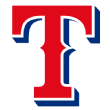 21. Nick Solak, DH, Texas Rangers
21. Nick Solak, DH, Texas Rangers
Acquired from the Rays in mid-2019, Solak made his major league debut soon after and showed the Rangers that he could hit at the highest level. After hitting .294/.383/.468 in the minors, he produced a .293/.393/.491 line for Texas, while collecting 12 extra-base hits in 135 plate appearances. He did that mostly as a DH, which is where he'll qualify to begin the season in ESPN leagues. As long as he hits like that, where he plays in the field shouldn't matter much. In fact, his defensive limitations might actually make him a more attractive fantasy option, as he could potentially gain eligibility at both second and third, with some opportunities at first and perhaps even the outfield.
SUMMER UPDATE: "Nick the Stick" seems like a cool nickname. It fits in Solak's case as all of his value is tied into his bat. If he hits? He will play and be a useful player in both the real and fantasy realms. If he doesn't? There is not much in the profile to consider him rosterable. As mentioned previously, the real-life defensive questions could increase his fantasy value with multi-position eligibility. Despite averaging 28 home runs a year over the past four years, Rougned Odor has been a below-average hitter overall and last year was pretty much a replacement-level player. If there was a soft spot for Solak to slide into, the keystone might be it.
 22. Jose Urquidy, SP, Houston Astros
22. Jose Urquidy, SP, Houston Astros
Urquidy is primed for a full-time job in the Astros' rotation after spot duty in 2019. He pitched well across 41 innings, racking up 40 strikeouts to just seven walks. The home run bug bit a little harder than in previous seasons, but we'll need a larger sample before deeming it a problem. He features a low-90s fastball that is backed by a plus changeup. The off-speed pitch helped him neutralize left-handed batters to the tune of .179/.210/.321. Meanwhile, righties feasted a bit, causing a reverse split. He tosses a pair of breaking balls, but perhaps a narrowed focus on one will help bridge the gap. He is slated to make a lot of starts on a team that will win a lot of games.
SUMMER UPDATE: Urquidy is a weird one for me. In a full season, I see a potential double-digit-game winner from the back end of the rotation. However, in the shortened season where bullpens will be kicked into high gear, I don't see as much value, unless his strikeouts jump up to a number that makes him a producer in that category beyond the average starter. Still, he has a starting job on a good team. Perhaps he sneaks in more wins than I am thinking and maintains a strikeout per frame or better. For those reasons, he is worth a spot right near the top 20.
 23. Alec Bohm, 3B, Philadelphia Phillies
23. Alec Bohm, 3B, Philadelphia Phillies
Selected one pick before Nick Madrigal in 2018, Bohm shot through the Phillies' system, clearing both levels of A-ball and ending the year in Double-A. All of 6-foot-5 and around 230 pounds, he collected 55 extra-base hits, including 21 home runs, across the three affiliates. The final 14 of those came in Reading, where he played just 63 games. His average dipped slightly with the jump in competition. That said, he maintained a walk rate of about 10% and struck out just 14% of the time. Defensively, Bohm has played third base more than first. He has the arm for the left side, but I am not sure the range is there long term. He will get a shot at the hot corner at some point because Maikel Franco is gone and Scott Kingery can play all over the diamond. A threat for 20-plus home runs with a solid average in a good lineup is where Bohm should settle.
SUMMER UPDATE: You would have a hard time convincing me that Bohm is not one of the best nine hitters available to Philadelphia right now. He has plus power with a solid approach and some defensive flexibility. The extra bat in the lineup allows Philadelphia to rotate players between DH and other positions. I am in the camp of having Bohm be one of those players. That might not happen to start, but the Phillies want to win. That becomes easier to do when you have your best players in the lineup.
 24. Forrest Whitley, SP, Houston Astros
24. Forrest Whitley, SP, Houston Astros
Oh boy. Whitley was my sixth-best prospect heading into 2019 and the top pitcher on the list. After overcoming a suspension and injury in 2018, he appeared to be poised for big things in 2019. He was downright awful to start the year before missing time due to an arm-related injury. He showed flashes of brilliance in small doses, but overall it was a second straight lost season for the big Texan. Outside of the minor injuries, there appears to be nothing wrong with his stuff. I saw a very good Whitley later on in the season -- one that was very true to the scouting reports. There are growing whispers about maturity. He wouldn't be the first to have to overcome those issues. If he can hone his focus, top-of-the-rotation upside remains from a physical standpoint.
SUMMER UPDATE: 2020 was already going to be a weird year for the Astros after the punishment handed down to the organization for their sign-stealing exploits. A new general manager, a new manager and the loss of an ace would be difficult for most teams to overcome, but Houston appears well positioned at least when it comes to replacing Gerrit Cole. No single arm will do that, but with a returning Lance McCullers Jr. and a slew of young arms like Whitley, they should be able to soften the blow. Whitley was up and down, to say the least, in 2019. The talent remains, and at his best, he is a level above the Josh James and Rogelio Armenteros types. He could be a tremendous weapon as a bulk reliever before taking a full-time role when things get back to normal ... whatever that is.
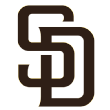 25. MacKenzie Gore, SP, San Diego Padres
25. MacKenzie Gore, SP, San Diego Padres
Gore being ranked in the early 40s on a prospect list seems insane, considering he is widely regarded as the top arm in the minors. However, the more prestigious the arm, the more caution to be exercised. The lefty had a tremendous run in Advanced-A in which he allowed just nine earned runs across 79⅓ innings. He struck out 110 batters and walked just 20. He was hit a little harder upon a promotion to Double-A but still produced better than a strikeout per inning. He is left-handed with a good frame, four really good pitches and projectable command. The fastball lives in the 93-96 range with movement. He spins a curveball and a slider with varying speeds and a changeup that is fourth in order but also probably a plus pitch. He is an ace. It will just probably take a little longer than some other names on this list, which is the reason for the slide toward the back end.
SUMMER UPDATE: Gore makes a huge leap from March, jumping from No. 42 to here at No. 25. Nothing in the profile has changed, but if there is one GM that I can see going all-in on a short season it is A.J. Preller -- and why not? Talent has no wristwatch, and Preller has loads of talent. Gore is one of the best arms in the minor leagues and has all the makings of an ace. In a race to keep up with the Dodgers in the West, he could certainly help the Padres more than Garrett Richards. There is the potential for four plus pitches, with three of them pretty much there already. Do it, A.J.
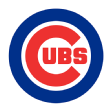 26. Nico Hoerner, SS, Chicago Cubs
26. Nico Hoerner, SS, Chicago Cubs
Hoerner is a player that former Cubs manager Joe Maddon would have loved to coach longer. He has an above-average hit tool with good speed and a feel for the game. He has spent a lot of time at shortstop, but with Javier Baez on the roster, he will likely spend most of his time across the bag. He also has the ability to play the outfield. The contact skills and versatility make him a great fit for any roster and will help first-year skipper David Ross manage off days and injury. Hoerner's value is ultimately dependent on playing time. Even if he starts out in Iowa, I think he will carve out a role as close to an everyday player, with the chance to provide some help in average and runs scored at minimum.
SUMMER UPDATE: I like Hoerner as a player. I'll spare the comparison to another former Cub with versatility, but I think he is a really useful player that just might not be in the best position with his current team. Not that Jason Kipnis is really a road block, but we can assume he'll get the primary starts at second -- at least to start the season. I think Chicago would be better suited with Hoerner in the lineup, using his high contact skills and speed. The DH definitely helps free up some time, with Kyle Schwarber having a new role that only involves batting gloves.
 27. Ian Anderson, SP, Atlanta Braves
27. Ian Anderson, SP, Atlanta Braves
The No. 3 selection in the 2016 draft is poised to make his big league debut sometime in 2020. A Futures Game alum, Anderson reached Triple-A in 2019 and will likely begin the upcoming season there. Armed with a low-to-mid-90s fastball, a plus curveball and a changeup not far behind, he has the medley desired to be a top-of-the-rotation starter. He lost a bit of control after his promotion to Gwinnett, but he has been able to relocate it in the past. The depth chart for Atlanta's rotation easily touches double digits. There is no reason to rush Anderson, but for a team looking to win now, there is also no reason to hold him back later in the season if he performs as expected.
SUMMER UPDATE: As has been the case for several seasons, Atlanta holds a treasure trove of arms to use for the upcoming season. Circumstances will dictate their usage -- including roles and timing -- so trying to predict that is an exercise in futility. Anderson is the best of the bunch to me so he goes first in the rankings. There are bigger arms with louder stuff, but the former Vanderbilt commit has enough raw talent, backed with a feel for the craft that sticks out to me over just the ability to throw hard. Felix Hernandez has opted out of the 2020 season and it was reported that Touki Toussaint is dealing with COVID-19, so there is certainly room for an Anderson type to get some starts in the abbreviated season. There are also a lot of types within the system that can do the same. Once again, for me, Anderson is the best of that bunch.
 28. Kyle Wright, SP, Atlanta Braves
28. Kyle Wright, SP, Atlanta Braves
It somehow feels like Wright has been a prospect for way too long. Selected fifth overall in 2017 out of the Vanderbilt powerhouse, many expected Wright to be an established big leaguer by now. He reached the majors briefly in 2018 but never really got it going in 2019. He did make seven appearances -- four starts -- for Atlanta last year. In those games he lost control (13 walks in 19⅔ innings) and command within the zone, leading to four longballs. He has four pitches: fastball, slider, curveball and changeup, with at least three carrying above-average (or better) grades. He has shown better control at times, but the inconsistency has held him back a little. He is right in that sixth-starter mix now, which means he should get another opportunity to trade the prospect label for a big league job in 2020.
SUMMER UPDATE: We'll double dip and go with another one of those Braves arms here. I know there are still people who believe in Wright's ability, but there are plenty who have wanted more from a top-five pick out of a prestigious college program. He has pitched 25 miserable, but sporadic, innings at the highest level and could be used as a reliever in the current environment with bigger bullpens to start the season. As mentioned, there could be opportunity in the rotation, but right now I would rather Anderson get his first shot over Wright getting his third.
 29. Spencer Howard, SP, Philadelphia Phillies
29. Spencer Howard, SP, Philadelphia Phillies
There are very high expectations for Howard, a 23-year-old right-hander who has just six starts above A-ball. He pitches from a solid base, with a plus-fastball that can reach the upper-90s. A breaking ball backs the heater and shares a plus designation. A true viable third option and control limit his ceiling right now, but they can be improved. Despite throwing just 71 regular-season innings because of shoulder issues last season and having thrown 100 innings in a year just once, there is hope he could pitch in meaningful games for the Phillies in 2020. He will not break camp with the team, but the organization did invite him to hang with the big leaguers, at least to start the spring. There is upside here, but opportunity and growth will be needed in the first half of the year.
SUMMER UPDATE: It would be quite the leap for Howard in regard to experience, but you could argue that he has the maturity and stuff to make the jump essentially from High-A to the bigs in the current environment. The thing about all these high-quality young arms is that teams will need to give them work. Tossing some side sessions and some scrimmage-type games will be cool for those further from the majors. Despite his relative inexperience as a pro, Howard is the type I would be willing to give a go at the highest level and see what happens. Unfortunately, the Phillies have had some positive COVID-19 tests that will impact their roster to start the season. This could open some time for players like Bohm and Howard.
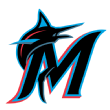 30. Sixto Sanchez, SP, Miami Marlins
30. Sixto Sanchez, SP, Miami Marlins
In terms of personal preference, no player has risen higher in my eyes over the past 12 months than Sanchez. The same concerns I had before remain: He lacks size and he has had shoulder concerns. The size is not changing, but after 114 successful innings, he looks healthy and strong enough to carry a heavier workload than I previously thought. Sanchez handled a promotion to Double-A in stride. He struck out 97 batters in 103 innings while allowing just 21 walks. He also surrendered just five home runs. He has a top-shelf fastball that approaches the century mark, with a curveball that flashes out-pitch potential. The changeup also shows flickers of greatness. He has some of the best control in the minors and projects for above-average command. While I don't think he'll be the rotation's workhorse, I think he will be a very good piece of it and may not need much time in Triple-A to get there. When he makes his debut, he will be the first Sixto Sanchez to play for the Marlins or anyone else.
SUMMER UPDATE: You cannot name five better pitchers in the Marlins' organization than Sanchez, so I believe he should be in the rotation from Day 1. Will they feel the same? Probably not, but that's on them. If I am Miami, I would want to keep building on the success of 2019, in which he pitched over 100 innings with very good results. The shortened schedule could give Sanchez another 60 innings to build on, with an eye toward something bigger for 2021. On the other hand, he could also probably give them 30 dominant innings as a short-to-middle reliever. Regardless, he is an arm that needs to pitch competitive innings this season.
 31. Jesus Sanchez, OF, Miami Marlins
31. Jesus Sanchez, OF, Miami Marlins
You heard it here first: Derek Jeter's Marlins are going to be fun to watch this year. They may not win a lot of games, but they have a ton of under-30 talent and have more on the way. Acquired at the trade deadline from the Rays, Sanchez is one of those on-the-way talents. He got off to a strong start in Double-A, showing the plus bat skills with signs of the extra-base potential. I am of the belief that he has even more pop to unlock out of his sturdy frame. He struggled a bit with contact once promoted to Triple-A but also had some issues adapting after a midseason bump in 2018. I would expect him to get off to another good start with New Orleans to start 2020 and head toward Miami soon after. I see the makings of a .285 hitter with 20-plus home runs at his best. When he makes his debut this year, he will be the second Jesus Sanchez to play for the Marlins, following the pitcher from the late '90s.
SUMMER UPDATE: Sanchez remains a player I like. Unlike some, however, I believe the short season hurts him a bit. I pegged him for a midsummer call-up, which landed him in the top 20, as I felt he could play in 75-85 games of action. Now, even if he did play half the year, we're talking just 30 games -- and realistically, probably less, as the Marlins have some left-handed corner-outfield types with guaranteed deals. Sanchez is obviously a bigger piece of the future than Matt Joyce or Corey Dickerson. His chance just may have to wait until next year.
 32. Ke'Bryan Hayes, 3B, Pittsburgh Pirates
32. Ke'Bryan Hayes, 3B, Pittsburgh Pirates
Defensively, Hayes has been ready for the show for quite some time. He has both the arm and glove to stick at the hot corner for the next decade. That should keep him in the lineup even as his bat develops. He has a plus-hit tool and has shown a solid approach. His over-the-wall power is average, with 10 home runs last season, but he did collect 30 doubles and has the frame to tap into more. The Pirates are in the midst of a rebuild. I would anticipate service time to be a factor when he makes his debut. Even with a delay, he should join Pittsburgh in the first half of 2020. From there, he should play every day as long as he remains healthy.
SUMMER UPDATE: Because of his glove, Hayes will always have more real value than fantasy value. He will be an elite defender at third base from the outset. He does have a very good hit tool, but the power is more projection than production. Even if he doesn't develop into a masher, he has enough power to go gap to gap. Remember, Josh Bell had similar concerns and that turned out well. Now, Bell always had more raw power, but sometimes it takes a while for things to click. Colin Moran is basically a replacement-level player, so the bar to upgrade is rather low. After the prorated service time for another year of control passes, it should be Hayes' time to play.
 33. Nick Madrigal, 2B, Chicago White Sox
33. Nick Madrigal, 2B, Chicago White Sox
The White Sox selected Madrigal at No. 4 overall in 2018 with the hope that arguably the best pure hitter in the class would progress quickly through their system and ultimately top their lineup. That hope appears to be materializing as planned. Since turning pro, the former Oregon State Beaver has been a .309 hitter in over 700 plate appearances, including a .331 average once promoted to Triple-A Charlotte. In fact, if I had to bet on any one skill from any one player translating to the highest level, Madrigal's hit tool would likely be the one I'd put my chips behind. He should lead off, with annual flirtation with a .300 average, if not higher. He should do so rather soon, as he appears to be MLB-ready. The reason he drops out of the top 20 for me right now is that the average could be rather empty. He has below-average power and does not project to add much more, if any. That said, if you're targeting average to balance out some of your other players, Madrigal is a very good option to keep in mind.
SUMMER UPDATE: Madrigal is another player I liked over the course of a longer season, but now with the limited action, I am not as bullish -- at least in terms of playing time. I still like the profile for the situation: an über-contact hitter, potentially batting in front of a bunch of dudes that can hit the ball far. Madrigal won't do that as much, with below-average power. The value is almost exclusively tied to his batting average. A high batting average will mean more chances to score in front of the aforementioned powerful lineup. Leury Garcia currently holds his place both in the field and batting order, but the veteran can also play elsewhere when the White Sox deem Madrigal ready.
 34. Tarik Skubal, SP, Detroit Tigers
34. Tarik Skubal, SP, Detroit Tigers
Remember when I said the Tigers would be turning it around soon? Add Skubal to the names Mize and Manning, players who will be assisting in that process. After undergoing Tommy John surgery in college, the lefty bet on himself and returned to school. He improved his draft status by 20 rounds and signed an above-slot deal with Detroit in 2018. Since then, he has risen through the system, showing stuff and poise at each stop. He struck out 82 batters in just 42⅓ innings after a midseason promotion to Double-A. As the left-handed compliment to Mize and Manning, he lives in the low-to-mid-90s with at least one plus secondary offering and the potential for two more above-average ones. Skubal can use some calibration on his pitch compass but is not a wild child by any stretch. He will probably settle as a No. 3 behind the two talented righties, which will give the Tigers a really impressive young trio.
SUMMER UPDATE: I am a big fan of the way Skubal pitches. He throws a good fastball and throws it often. Spinny breaking balls and off-speed pitches that fall off tables are awesome. However, there is no better pitch in baseball than a well-located fastball. Skubal passed his first Double-A test with great results, but he will need his changeup and slider to get outs at the top level as even the best fastball will get hit in the bigs. The Tigers of early July and August could be really bad, but the late-August and September version could be really fun.
 35. Alex Jackson, C, Atlanta Braves
35. Alex Jackson, C, Atlanta Braves
SUMMER UPDATE: Previously unranked, Jackson is a catching prospect once again after some positional experimentation. It is unlikely he will ever become a great defensive backstop, but he has improved and there are few players at the position with his ability to hit the ball like he can. William Contreras is the better bet at catcher long term, but we're not concerned about that here. The duo of Travis d'Arnaud and Tyler Flowers is a serviceable one on paper. They'll get most of the work. That said, a third catcher will be necessary at some point with so many games in so few days and all we want is for Jackson to be eligible at the position to take advantage of his plus raw power. Now he might strike out 40% of the time, but if you're selling out for some cheap power at a need position, watch out for Jackson's progression.
 36. James Kaprielian, SP, Oakland Athletics
36. James Kaprielian, SP, Oakland Athletics
A personal favorite, Kaprielian is no stranger to injury, having missed all of 2017 and 2018 before returning to the bump in 2019. After some time getting reacclimated to the game in Advanced-A ball, he was bumped up to Double-A, where he handled an increase in competition and workload in stride. The No. 16 pick way back in 2015 made seven appearances (five starts) for Midland of the Texas League. He struck out 25 while walking eight as he allowed just five runs to cross the plate in 27⅔ innings. Toward the end of last season, Kaprielian was approaching the mid-90s with his fastball. He continues to show a plus changeup and two breaking balls. There is a small chance he breaks camp with the A's, but even if not, he should finally make his big league debut in 2020.
SUMMER UPDATE: Kaprielian has had anything but a conventional path to the majors, so it would be fitting for him to debut under these unique circumstances. Finally healthy enough to pitch last season for the first time since 2016, he tossed just over 25 innings in a handful of appearances. There is definitely a workload concern considering the injury history, but Kaprielian probably wouldn't have thrown more than 100 innings in 2020 anyway. Getting him to throw 30-40 innings at the highest level would be a huge win for both the player and the organization.
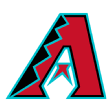 37. Daulton Varsho, C, Arizona Diamondbacks
37. Daulton Varsho, C, Arizona Diamondbacks
Varsho is a bit of a unicorn, providing both power and speed at the plate in the form of a catcher behind it. A supplemental pick in 2017, he had a tremendous 2019 season, hitting .301/.378/.520 in 108 games. He swiped 21 bags in 26 chances and racked up 47 extra-base hits, including 18 home runs. Varsho put these numbers up while starting 76 games at catcher. He is a good athlete and has the receiving part of the game down, but there are concerns about his throwing. He gunned down just 20% of runners in 2019 and is around 30% for his career. All signs point to Arizona keeping him behind the dish, but he has experience elsewhere, including a handful of starts in center last year. As a catcher, he would have tremendous value. As anything else? Not as much.
SUMMER UPDATE: There is a chance this ranking is too low, as the best-case scenario for Varsho is a good hitter with speed and power that could potentially carry eligibility at multiple positions, with the most important being at catcher. Some feel his ultimate home is somewhere other than behind the plate, but that might not matter for 2020. Arizona has just two catchers on the 40-man roster and one of them is Stephen Vogt, who has battled some serious injuries over the last few seasons. Veteran John Hicks is part of the player pool but does not offer near the upside of Varsho at the plate. We'll see if I was too low on this ranking.
 38. Cristian Pache, OF, Atlanta Braves
38. Cristian Pache, OF, Atlanta Braves
I'll take Waters in both real life and fantasy long term, but it's pretty close. Pache is faster and a better defender. He can be one of the top defensive center fielders for the next decade or a dominant right fielder with the arm to make opposing offenses change their strategy on the basepaths. Offensively, he has some similarities to Waters. There is a solid hit tool and the potential for more but discipline that could use some work. Pache did collect 57 extra-base hits last season, with 12 clearing the fence. He had nine triples, showing off his natural speed, but was just 8-for-19 in stolen base attempts, which shows that natural speed is cool but baserunning is about more than flat-out foot speed. The outfield configuration of Ronald Acuna Jr., Pache and Drew Waters has the potential to be the most dynamic trio in the league offensively and defensively. I'll say Pache gets there ahead of Waters, as his glove is ready to make an impact right now, but to reiterate ... I'll take Waters long term.
SUMMER UPDATE: So remember all that stuff I said about Waters over Pache? I still feel that way for the long term, but in this format? I think Pache would be the one to get the call if the Braves needed an outfielder because he is an elite defender who could play center field right now at the highest level. His glove is so good that he could get by as a bad No. 9 hitter today and still be valuable to Atlanta. That wouldn't do much for fantasy, but he does have plus speed, even if he needs some refinement as a runner and could give you some cheap steals if he gets on base enough.
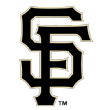 39. Joey Bart, C, San Francisco Giants
39. Joey Bart, C, San Francisco Giants
The second-best catching prospect in the game behind the Orioles' Adley Rutschman, Bart, drafted second overall in 2018, has a year head start on his fellow black-and-orange-clad backstop. Having already reached Double-A briefly in 2019 despite losing time to injury, he could make it to San Francisco by the end of this upcoming season. Bart is a big boy with big power. He smashed 16 home runs in just 79 games. He also collected 14 doubles and a few triples for good measure. He is a true catcher that receives high marks in both the physical and mental aspects of the position. He may settle in as a .260 hitter, but if he clubs 30 home runs and 30 doubles, he'll be a fantasy star, considering the positional scarcity.
SUMMER UPDATE: The Giants should use Bart in a time-share with Buster Posey, while using the DH to rotate Posey and Hunter Pence on the days the youngster catches. Bart would certainly be an upgrade over Rob Brantly as the club's second catcher. A lineup with Bart behind the plate, Posey at DH and Pence in a corner outfield would be more potent than one with Billy Hamilton taking up a spot in the order -- although you would sacrifice some defense and Pence might not have the durability to do it on a regular basis at this point. On the other hand, it's a 60-game sprint and Bart over Hamilton at the plate is a big enough gap to warrant real consideration, even if the team isn't likely to make the move.
 40. Ryan Mountcastle, 1B/3B/OF, Baltimore Orioles
40. Ryan Mountcastle, 1B/3B/OF, Baltimore Orioles
Here is where this list differs from most. Mountcastle by all accounts, mine included, is a fine player. He is certainly a top-100 prospect, but he landed in the top 10 here for a few reasons. The first is opportunity. The Orioles need a lot of help. Mountcastle can hit and do so with power. If he settles as a .280 hitter with 25 or more home runs, then Baltimore and fantasy owners alike will be happy. Where he plays is more of Baltimore's problem than yours. Whether it's first, third, the outfield or as a DH, as long as he produces we don't really care where he fields. The Orioles have been bad. They will be bad again this season, so he should get plenty of plate appearances without much concern for how good or bad it impacts the overall team for 2020.
SUMMER UPDATE: Mountcastle was left off Baltimore's initial roster but is expected to be added to the 60-man group at some point ... we hope. The fact that he wasn't in the team's immediate plans is not great. Trey Mancini will miss the upcoming season and Chris Davis is still bad at hitting baseballs on a consistent basis. In the spring, the opportunity to play first base on an everyday basis looked to be ripe for Mountcastle. It did last September too. Not so much now. It is a little baffling that Baltimore, a team starved of talent, wouldn't give him a shot in this format -- or any, for that matter. He should be a top-20 player on this list, but we have no idea what the Orioles are doing.
 41. Luis Patino, SP, San Diego Padres
41. Luis Patino, SP, San Diego Padres
SUMMER UPDATE: My original list included just one of the Padres' top arms, with Gore landing in this spot back in March. With things the way they are now, we may see both young hurlers pitching for San Diego at some point, as they are too talented to not pitch meaningful innings in 2020. I give Gore the edge to debut first and thus the higher ranking. Patino has two plus offerings with a high-velocity fastball and a true wipeout slider. His changeup could also be plus at some point and he can spin a curveball for good measure. He also has solid control that should become command. He is a top-25 prospect in the game. I'm just not sure if there's room for both Gore and Patino in 2020, but I would once again dare A.J. Preller to try.
 42. Drew Waters, OF, Atlanta Braves
42. Drew Waters, OF, Atlanta Braves
The Braves stayed local when they tapped Waters with the 41st pick in 2017. The $1.5 million bonus was enough to lure him to the professional ranks instead of the University of Georgia. Attending high school 30-something miles outside Atlanta, Waters is poised to play in the big city as soon as 2020. He dominated the Southern League as a 20-year-old, earning MVP honors for his .319/.366/.481 line with 49 extra-base hits in 108 games. He returned to Georgia, where he hit .271 in 26 additional games for Triple-A Gwinnett. He's a true switch-hitter with speed and the ability to track the ball at any of the three outfield positions. Currently, his power is more to the gaps than over the wall, but there is hope that as he develops physically, so will the power. His discipline could also use some refinement. That said, he's so far ahead developmentally in other phases that there is time to smooth some of these rough edges. Cristian Pache is typically about 20 to 25 spots higher on traditional lists, but I'll take Waters in both real life and fantasy long term.
SUMMER UPDATE: Y'all know Waters is my guy, but for reasons mentioned at No. 38, he takes a bit of a fall from the spring. I think Waters can be a good enough hitter to pass as a big leaguer if Atlanta needed him in 2020, but I think Pache's glove and speed could be more useful for the upcoming months. I am higher than several people are on Waters. More likely than not, that optimism will have to wait until 2021 at the earliest.
 43. Jarred Kelenic, OF, Seattle Mariners
43. Jarred Kelenic, OF, Seattle Mariners
The Mets will, in all likelihood, regret that they traded Kelenic away for two veteran players who did not help them win much in their time with the team. Meanwhile, the Mariners have one of the top 10 prospects in baseball, who has all of the elements to be a five-tool player at the highest level. He rocketed through Seattle's system mostly as a teenager last year, ending the year with Double-A Arkansas. Across three levels, he hit 23 home runs and 31 doubles while swiping 20 bases. He did this while playing mostly center field, where he projects to stick, although he did play some right field and has the arm to hang there if needed. He will likely be top five on this list next season.
SUMMER UPDATE: You know the deal. Kelenic is a tremendous talent. He is a top-15 prospect overall and, as mentioned above, he will be a major player in 2021. That said, you can never say never for 2020. I know for sure I would rather see Kelenic over Jake Fraley or even Kelenic pushing Mallex Smith to a more reduced role. Alas it remains unlikely, but the talent is so immense that he has to be listed on the off chance the Mariners do something crazy and try to field the best roster they can.
 44. Brusdar Graterol, SP, Los Angeles Dodgers
44. Brusdar Graterol, SP, Los Angeles Dodgers
Graterol has a tremendous arm. He showed it in short bursts when the Twins called him up in September as a reliever. His fastball touches triple digits and he has a hard slider to back it up. He also throws an occasional changeup and has a slower curveball in his mix. The development of a third pitch will be a key step in the 21-year-old's development. Graterol has missed time with injury, so his workload is something to monitor. He's thrown 100 innings in a season just once and he missed some time last season with a shoulder issue. The high-octane stuff and wipeout slider invoke visions of an ace, but the injuries and durability offer a downside of a high-leverage reliever. Now the Dodgers, not the Twins nor the Boston Red Sox, are hoping for the former before having to settle for the latter. Already with a bit of experience on the 40-man roster, he could spend a decent amount of time in Los Angeles this year.
SUMMER UPDATE: It is probably a pipe dream, but imagine Graterol as a hard-throwing, fire-breathing relief dragon getting high-leverage outs in the playoffs for the Dodgers as they seek their first World Series title of the 21st century. It might happen, but the Dodgers have several 30-somethings ahead of him on the leverage depth chart. Now, there is also the potential that Graterol could start, but May is definitely ahead of him there. Perhaps a blend of multi-inning appearances to start and graduating to the back end of games toward the postseason will be the right recipe for this already well-traveled youngster.
 45. Vidal Brujan, 2B, Tampa Bay Rays
45. Vidal Brujan, 2B, Tampa Bay Rays
Something will have to give in Tampa Bay over the next few seasons, as the combination of Wander Franco and Brujan up the middle offers a tremendous amount of upside. Currently, the team is well stocked with Willy Adames at shortstop and a glut of 2B options. While that gets sorted out at the big league level, Brujan figures to wreak havoc on the international league as the likely leadoff hitter for the Durham Bulls at some point in 2020. He reached Double-A in the second half of 2019, so a return to Montgomery is not out of the question. He is a switch-hitter with more production from the left side, including surprising pop for his frame. He has plus-plus speed and can handle himself on either side of the bag, with second base likely being his long-term home thanks to Franco. A true leadoff hitter has alluded the Rays for quite some time. They may have their answer by this time next year.
SUMMER UPDATE: If any team is going to figure out the best way to maximize the roster for this one-of-a-kind season, it will likely be Tampa Bay. The Rays have a ton of prospects on their 60-man roster -- including the top overall player. Brujan has less pedigree but could have more impact. He has leadoff hitter potential with double-plus speed and can play both sides of second base and probably be a standout defender in center field if he wanted to. In a season where steals are going to be tricky, it would not surprise me if the Rays employed Brujan as a souped up pinch-runner that could steal bases late in games and as a run-scoring threat with the new extra-innings rules coming into play.
 46. Jazz Chisholm, SS, Miami Marlins
46. Jazz Chisholm, SS, Miami Marlins
Chisholm was acquired by the Marlins in a rare exchange of young players that saw pitcher Zac Gallen go to the Diamondbacks last July. Gallen is one of my favorite young arms, but you can see why the Marlins were willing to part with him for middle-of-the-diamond potential, especially at this stage of their rebuild. Signed out of the Bahamas in 2015, Chisholm has excellent raw power for someone that projects to be an above-average defender at shortstop. His incredibly fast hands allows him to generate hard contact despite a smaller frame. He also has good speed and has shown some baserunning chops. The concern is the hit tool and the ability to make consistent contact. Historically, he has struck out in about one-third of his plate appearances. That is a definite concern moving forward. He could still be a successful player as a shortstop who hits .240 with 20 home runs, but his star would be much brighter if he can improve his feel for the zone.
SUMMER UPDATE: Chisholm seems like one of those guys who has the chance to just make it all come together one day. If he does, he is a superstar in the making. He has above-average power and all the tools to be a standout defender at shortstop. This is the outcome the Marlins are hoping for, especially since it cost a young MLB starting pitcher to acquire him. I would think new hitting coach Eric Duncan and his assistant Robert Rodriguez will be keeping close tabs on their young hitter over the next few weeks in the modified camp setting. I like Miguel Rojas as a player, but he can be moved around if needed to give Chisholm a chance to face top-level competition and see how deep that contact trouble is.
 47. Shane McClanahan, P, Tampa Bay Rays
47. Shane McClanahan, P, Tampa Bay Rays
SUMMER UPDATE: Hear me out on this one. The Rays are unlikely to name anyone as their closer anytime soon. Emilio Pagan got the saves for most of 2019, but he pitches for the Padres now. The natural choice would be Nick Anderson, who was dominant after a trade with the Marlins, but Anderson got a lot of important outs before the ninth inning to set up save situations. Similar things can be said for Diego Castillo and Jose Alvarado circa 2018. Not all of the Rays' pitching prospects can start games or serve as multi-inning relievers. Let's say the Rays want to continue to use Anderson, Castillo and Alvarado as stoppers in innings 6-8. Wouldn't it be great to have a pitcher who could throw 100 mph with a wipeout slider available to handle the ninth? That could be McClanahan, as he is the most advanced of the non-McKay prospects. I think he deserves more of a chance to develop as a starter, for sure. But for 60 games? It could be an interesting way to get the southpaw some innings, as well as limit the earning potential of those closer to arbitration.
 48. Austin Hays, OF, Baltimore Orioles
48. Austin Hays, OF, Baltimore Orioles
SUMMER UPDATE: Hays has the inside track on an everyday job and could be Baltimore's leadoff hitter. That would seem like it should mean a slam dunk inclusion on this list, but it's an everyday job and leading off for one of the worst projected lineups. Seriously, the Orioles might not win 20 games in a 60-game season. Hays is also an outfielder exclusively. It's obviously a tremendously deep position, so he would really need to stand out to be worth a shot in most 10-12 team standard leagues. Still, he does have a job and a lot of other prospects don't at this point. He could smack double-digit home runs with a decent average and steal a handful of bags, but I wouldn't expect too much else. The supporting cast just doesn't lend itself to a bunch of runs or RBI opportunities.
 41. James Karinchak, RP, Cleveland Indians
41. James Karinchak, RP, Cleveland Indians
SUMMER UPDATE: A ninth-round pick out of Bryant University, Karinchak is the rare true relief prospect. The right-hander was flat out dominant in the minors last season, striking out 74 batters in 30 1/3 innings. He briefly made his MLB debut in September, striking out eight more while walking one in 5 1/3 innings for Cleveland. Brad Hand is still the man for Terry Francona, but Karinchak is starting to get some buzz. If Hand goes down or is ineffective, the 24-year-old could take over the ninth inning. He is the classic two-pitch reliever with a high-90s heater and a legit breaking ball that can end plate appearances.
 50. Wander Franco, SS, Tampa Bay Rays
50. Wander Franco, SS, Tampa Bay Rays
SUMMER UPDATE: It's still unlikely, but what if? What if the Rays are in contention down the stretch, battling with the beasts of the East and needing that extra bit of talent to get them over the hump? What if Yandy Diaz, Joey Wendle and whoever else gets a turn at the hot corner just aren't cutting it? How dynamic would a left-side infield containing Franco and Willy Adames in some fashion be? This will be the weirdest season in recent memory. So what if? And, more important, why not?
